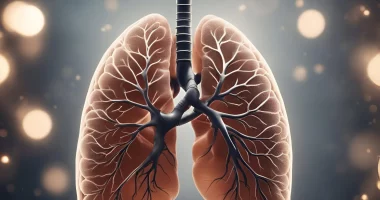Bell’s palsy, also known as facial palsy, happens when the muscles on one part of the face become weak or paralyzed. This makes that side of the face droop or feel stiff. It can happen suddenly, within a few hours, and usually gets better on its own after a few weeks or few months without needing treatment.
Along with facial weakness, someone with Bell’s palsy might notice changes in their sense of taste, be more sensitive to loud sounds, and have differences in how much spit and tears they make.
Doctors aren’t always sure why Bell’s palsy happens, but they think it has something to do with a problem in the seventh cranial nerve, which regulates facial muscles.
Even though it can be scary, most people with Bell’s palsy get better completely.
What is Bell’s palsy?
Bell’s palsy is when one part of your face feels weak or can’t move well, but doctors don’t always know why.
The signs usually show up slowly, over a few hours. The side of your face that’s affected might droop down. You might also notice changes in how much spit and tears you make, and your sense of taste might be different.
Sometimes, people worry they’re getting a stroke when their face feels weird, but if it’s just your face that’s not working right, it’s more likely to be Bell’s palsy.
Every year in the United States, there are around 40,000 new episodes of Bell’s palsy. That means about 1 in every 60 individuals might have it at some point in their life.
Symptoms
Symptoms of Bell’s palsy can vary but often include sudden weakness or paralysis on one part of the face. This might make it hard to close the eye or mouth properly on that side, leading to problems like cornea exposure and eye irritation due to dryness. Changes in tear production can occur, alongside drooping of the mouth or brow, and alterations in facial expressions. Other symptoms might involve a difference in taste perception, sound sensitivity, and strange sensations in the face, sometimes accompanied by facial pain. The seriousness of these symptoms can level from mild fatigue to complete paralysis.
Research indicates that these symptoms typically start to show and progress over about 72 hours. After this initial phase, they usually stabilize. While most cases of Bell’s palsy resolve on their own over time, it may take months or even years for symptoms to completely disappear without treatment.
Causes
Bell’s palsy usually occurs when the seventh cranial nerve, also known as the facial nerve, gets squeezed due to inflammation. This nerve stretches from the brainstem to the tongue and face. It’s responsible for controlling facial expressions like frowning and smiling, some jaw movements, muscles in the middle ear, and the glands that produce saliva and tears. Inflammation can put pressure on this nerve as it moves through the facial canal near the temple, which is a bony part of the skull. This pressure disrupts the signals between the facial muscles and the brain, resulting in the paralysis or weakness seen in Bell’s palsy.
Sometimes, the cause of Bell’s palsy isn’t clear, but it can also be connected to certain conditions like Lyme disease, trauma, Ramsay Hunt syndrome, HIV, tuberculosis, vasculitis, sarcoidosis, or even a tumor. If tests reveal any of these conditions, doctors will focus on treating the underlying cause to address Bell’s palsy.
Risk factors
Certain factors and conditions can raise the chances of growing Bell’s palsy. These include having diabetes, hypertension, or being pregnant. Obesity and preeclampsia, a condition causing hypertension during pregnancy, are also linked to a higher risk. Additionally, being middle-aged or older, with an average age of around 40 years, may increase the likelihood of developing Bell’s palsy.
According to a 2019 study, individuals with migraines might have a heightened risk of Bell’s palsy, particularly if they are between the ages of 30 to 60 years old. These risk factors highlight the importance of managing underlying health conditions and being aware of potential triggers for Bell’s palsy.
Treatment
Treatment choices for Bell’s palsy encompass various approaches tailored to manage symptoms and promote recovery.
Corticosteroids, like prednisolone, are often prescribed to decrease inflammation and enhance the likelihood of full facial recovery. Initiated within 72 hours of symptom onset, a 10-day course of oral steroids is typically recommended, especially in cases of idiopathic Bell’s palsy where no specific cause is identified. However, steroids may not suit everyone and can have side effects, prompting ongoing research, particularly regarding their efficacy in pediatric cases.
In certain instances, antiviral medication, like acyclovir, may be added alongside corticosteroids, although its effectiveness remains uncertain. While some studies suggest a combination of antivirals and steroids may decrease the risk of complications, others indicate limited additional benefits from antivirals.
Botulinum toxin type A, called Botox, shows promise in restoring facial symmetry, but precise application is crucial to avoid unintended consequences. Therefore, seeking guidance from a qualified practitioner is essential for individuals considering this treatment.
Addressing dry eye, a common complication, involves lubricating the eye with ointments, drops, or protective measures like tape or shields during sleep to prevent damage or infection.
Home care strategies, including facial exercises, meticulous oral hygiene, mindful eating habits, and over-the-counter pain relief, can aid in managing symptoms and supporting recovery.
In cases where symptoms persist despite conservative measures, surgery may be considered to alleviate nerve pressure, prevent dry eyes, or enhance facial appearance. However, the effectiveness of surgical interventions, particularly for cosmetic purposes, remains variable and warrants careful consideration.
Exercise
Exercise can help improve recovery from Bell’s palsy. A physical therapist will suggest exercises based on how far along you are in your recovery. It’s important to follow their advice carefully. Here’s an example of some exercises you might do:
- Start by practicing relaxing the side of your face that wasn’t affected.
- Softly stroke the affected part of your face upward toward your cheekbone.
- Then, try massaging the affected area.
- Use your index or middle finger to lift the eyebrow on the affected side.
- Slowly close your eye on the affected side, using your finger to help if needed.
- With one finger, gently push the corner of your mouth on the affected side toward the middle.
- Again, softly pull the corner of your mouth into a smile using a single finger.
Try to do these exercises for 2 to 3 minutes, four or five times a day. They can help strengthen your facial muscles and improve your ability to move your face normally again.
Diagnosis
Prompt diagnosis is crucial for individuals with Bell’s palsy as early treatment within 72 hours of symptom onset can significantly aid recovery. Seeking medical assistance promptly is advisable.
During a medical evaluation, a doctor will inquire about symptoms and conduct a thorough examination, paying particular attention to any signs of upper and lower facial weakness. They will also assess the function of facial muscles and review the individual’s medical history to gain insight into potential contributing factors.
In some cases, additional tests may be recommended to confirm the diagnosis and rule out other conditions. These tests may include electromyography to assess muscle and nerve activity, as well as imaging studies like CT or MRI scans to identify inflammation or other underlying causes of Bell’s palsy. Furthermore, tests may be conducted to exclude alternative conditions like Lyme disease.
Complications
Although most individuals with Bell’s palsy recover completely, severe damage to the facial nerve can lead to potential complications.
One possible complication involves the abnormal regrowth of nerve fibers, which can cause involuntary muscle contractions. For instance, attempting to smile may inadvertently lead to the closure of one eye due to these involuntary movements.
Another complication is corneal dryness, which occurs when the eye does not produce enough tears. This can heighten the risk of eye infections and vision loss if left untreated.
In some cases, permanent damage to the facial nerve may occur, resulting in long-term facial weakness or paralysis. While complications are relatively rare, they underscore the importance of timely diagnosis and appropriate management of Bell’s palsy.
Summary
Bell’s palsy is characterized by facial weakness or paralysis, often without a clear cause, with symptoms ranging from drooping of the face to changes in taste and sensitivity to sound. Inflammation of the facial nerve is thought to be a key factor, although specific triggers can vary. Prompt diagnosis is crucial, with treatment options including corticosteroids and antiviral medication to manage inflammation.
Exercises prescribed by a physical therapist can aid in recovery by strengthening facial muscles. Complications, though rare, can include involuntary muscle contractions, corneal dryness, and permanent nerve damage. Despite potential challenges, most individuals with Bell’s palsy experience full recovery with appropriate care.









